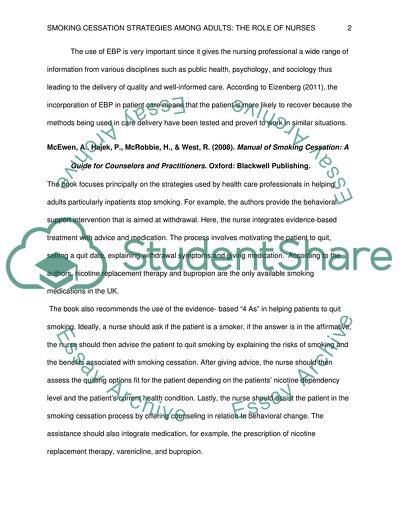Cite this document
(“Smoking cessation strategies among adults: the role of nurses Essay”, n.d.)
Smoking cessation strategies among adults: the role of nurses Essay. Retrieved from https://studentshare.org/nursing/1646606-smoking-cessation-strategies-among-adults-the-role-of-nurses
Smoking cessation strategies among adults: the role of nurses Essay. Retrieved from https://studentshare.org/nursing/1646606-smoking-cessation-strategies-among-adults-the-role-of-nurses
(Smoking Cessation Strategies Among Adults: The Role of Nurses Essay)
Smoking Cessation Strategies Among Adults: The Role of Nurses Essay. https://studentshare.org/nursing/1646606-smoking-cessation-strategies-among-adults-the-role-of-nurses.
Smoking Cessation Strategies Among Adults: The Role of Nurses Essay. https://studentshare.org/nursing/1646606-smoking-cessation-strategies-among-adults-the-role-of-nurses.
“Smoking Cessation Strategies Among Adults: The Role of Nurses Essay”, n.d. https://studentshare.org/nursing/1646606-smoking-cessation-strategies-among-adults-the-role-of-nurses.


